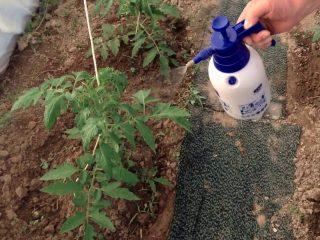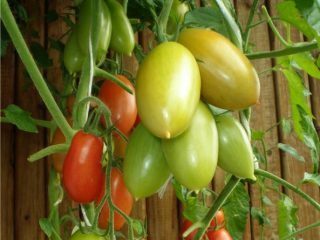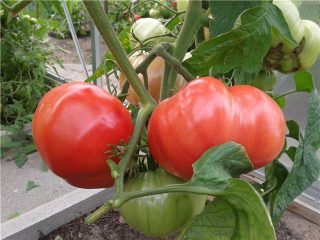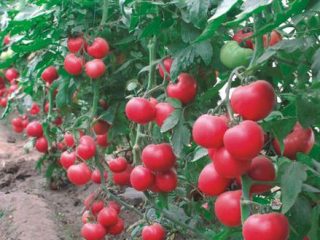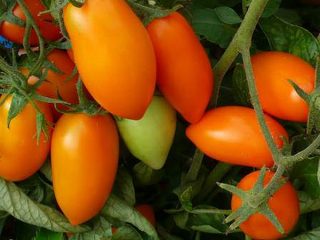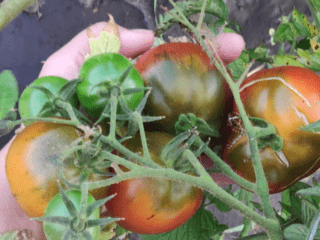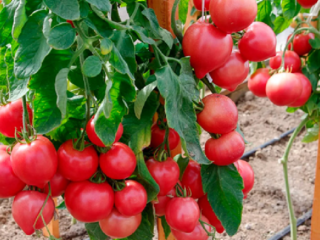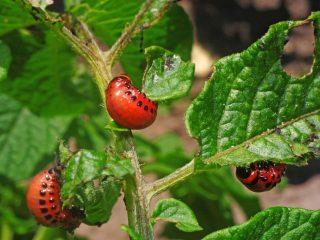Content
Tomato Solokha is a determinate variety that produces low bushes that are compactly placed in a greenhouse and in open beds. The fruits are medium-sized, elongated, have a balanced taste, so they are very much appreciated by summer residents. They appear until autumn frosts, which ensures high yields.
History of selection
A variety called Solokha was developed by Russian scientists relatively recently. The application for admission was submitted in 2007, and a year later it was included in the register of selection achievements. Novosibirsk researchers S.V. Ugarova and V.N. Dederko worked on the creation of the variety. and Postnikova T.N.
After passing successful tests, the Solokha tomato was approved for cultivation in almost all regions, including the North and North-West of Russia, Siberia and the Far East.
Description of the tomato variety Solokha
The tomato is a varietal variety (not a hybrid). The plant forms a standard bush of small height from 60 to 100 cm. In terms of ripening, it is mid-season, although fruiting continues until late autumn.If the weather is good enough, the fruits can be harvested even in October.
The culture is determinant, with limited growth (when a certain point is reached, it no longer grows upward). Thanks to this, the Solokha tomato is easy to care for - the bushes do not need to be pinched. The leaves are small, dark green, and have a typical shape. The trunk and branches are quite strong, but can bend due to the large harvest.
The description of the yellow Solokha tomato also provides the main characteristics of the fruit:
- shape of elongated cream;
- weight on average 80-100 g (individual specimens up to 140-200 g);
- the color at the maturity stage is raspberry-pink, scarlet;
- the pulp of the Solokha tomato is moderately dense, fleshy, and quite juicy;
- there are few seeds in the fruit;
- the taste is pleasant, with a slight sweetness (mass fraction of sugars 4-5%), the acid is not noticeable;
- the skin is very durable, but at the same time thin, so it is not noticeable on the tongue.
They ripen on the bush, but at the stage of technical maturity, you can pick the tomatoes and put them in boxes and keep them for several days at room temperature.
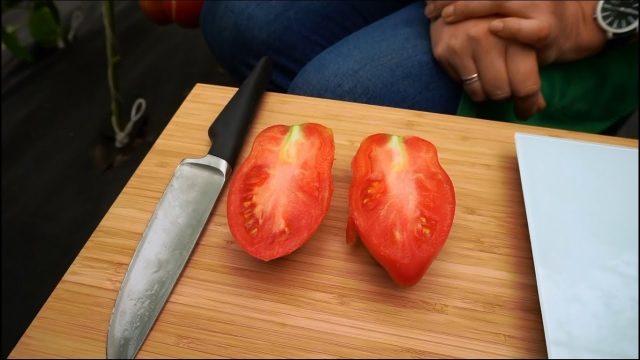
The shape of the fruits is typical of cream
Characteristics of the Solokha tomato
This tomato variety is characterized by a fairly high yield and low maintenance requirements, which is why it is popular with many summer residents. The main characteristics of Solokha tomatoes are described in detail below.
Tomato yield Solokha
The yield of this variety is quite good. 1-1.5 kg are collected from each bush. One plant produces 9-10 bunches of fruit, and each of them can produce five Solokha tomatoes.
On the one hand, this is not much, but it is important to understand that the plants are very compact and do not take up much space.Therefore, both in the beds and in the greenhouse you can plant 4-5 bushes per 1 m2. The total yield of the Solokha tomato in this case reaches 5-7 kg from the same area.
Although in practice, some summer residents often report larger harvests - 10-11 kg of ripe tomatoes. This corresponds to 2-2.5 kg per bush. Despite the fact that Solokha tomatoes take quite a long time to ripen, their fruiting is very long, one of the latest among all varieties. Therefore, if the conditions for care and cultivation in a greenhouse are observed, it is quite possible to achieve even such large indicators.
Resistance to diseases and pests
The Solokha tomato has very good immunity, which is an additional advantage. The crop is practically not affected by fusarium and verticillium and rarely suffers from pests. Therefore, as a preventive measure, after transplanting into soil or a greenhouse, it is recommended to treat them with biological preparations and periodically inspect the bushes.
Methods of application
The Solokha tomato is a universal variety. Due to its moderate juiciness, the ability to perfectly retain its shape and pleasant taste, it is suitable for fresh consumption and the preparation of many preparations, including pickles and picklings. But it’s worth considering that it doesn’t contain much liquid, so it’s better to consider other options for making juices and tomato puree.
Advantages and disadvantages of the Solokha tomato
Tomatoes of this variety have many advantages. They are attractive to look at and taste good. Fruits of universal use. Suitable for almost any type of processing.
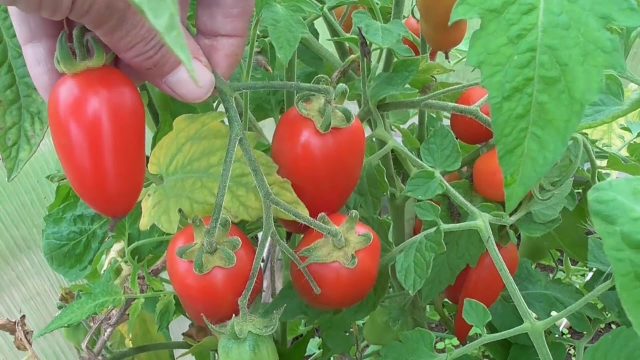
The fruits have time to ripen on the branch
Pros:
- tomatoes are moderately large and beautiful;
- excellent taste;
- good transportability, despite the thin skin;
- excellent immunity;
- keeping quality;
- universal purpose;
- compactness of the bush - you can save space;
- Suitable for cultivation in all regions.
Minuses:
- low juiciness;
- Not suitable for making purees and juices.
Features of cultivation
The Solokha tomato is a mid-season tomato - approximately 110 days pass from the emergence of seedlings to the ripening of the first tomatoes, i.e. less than four months. Moreover, the period of seedling formation is about seven days. It is recommended to plant seeds 60 days before the intended transplantation into the ground.
Since Solokh tomatoes are replanted at the end of May, and in some regions even at the beginning of June, it is better to start sowing at the end of March or early April (but no later than the first ten days).
Standard growing technology:
- Purchase universal soil or prepare a soil mixture based on black peat, sand, humus and turf soil (1:1:1:2).
- Place it in wide and shallow boxes and water with settled water.
- Plant the seeds to a depth of 1 cm, and it is recommended to maintain a distance of 4-5 cm.
- Next, cover with film or glass, and then place in a warm place (temperature 23-25 degrees or slightly higher).
- Continue to periodically water and ventilate.
- After the Solokha tomato shoots emerge, the film is finally removed.
- When three leaves appear, they are planted in peat pots or other separate containers.
- A few days after picking and a week after that, complex fertilizer is given.
- Two weeks before transplanting, Solokha tomato seedlings are hardened off. Then they are transferred to the ground.
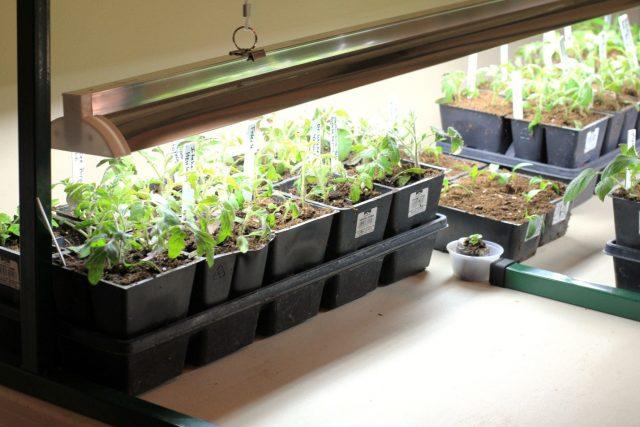
If there is insufficient lighting, the seedlings must be illuminated
It is recommended to plant seedlings according to a 70x50 cm pattern, thanks to which 4-5 plants can be placed on each square meter. Then they are watered regularly (twice a week) and fed (every 15 days).
It is best to alternate liquid organic matter, for example, humates with complex fertilizers. The soil is periodically loosened and weeds are removed if necessary. It is recommended to form Solokha tomato bushes into 3-4 stems. At the same time, there is no need to pin them down or tie them to a support.
Pest and disease control
Tomatoes of the Solokha variety are quite resistant to some fungal diseases. But due to improper watering and lack of ventilation in the greenhouse, they can suffer, for example, from various types of rot and late blight.
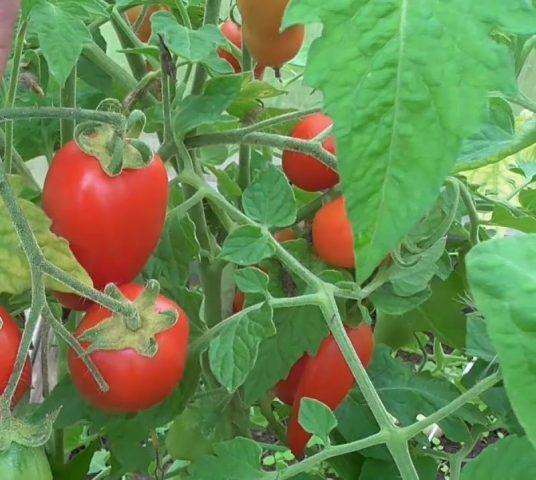
Chemicals should not be used during fruiting.
Therefore, after transplanting seedlings into the ground, it is recommended to treat the plants with fungicides:
- "Fundazol";
- "Maksim";
- "Bordeaux mixture"
During fruiting, spraying only with biological preparations, for example, Fitosporin, is allowed.
It is recommended to fight insects with folk remedies, for example, an infusion of tobacco dust, wood ash or a solution of laundry soap. You can also use biological preparations, for example, Fitoverm or Vertimek.
Conclusion
The Solokha tomato is one of the best varieties bred in recent years. Transportable and shelf-stable fruits with a pleasant taste are loved by many summer residents. In addition, the plants are not too whimsical and bear fruit normally in almost all regions, even in the fall.
Reviews from gardeners about the Solokha tomato variety
